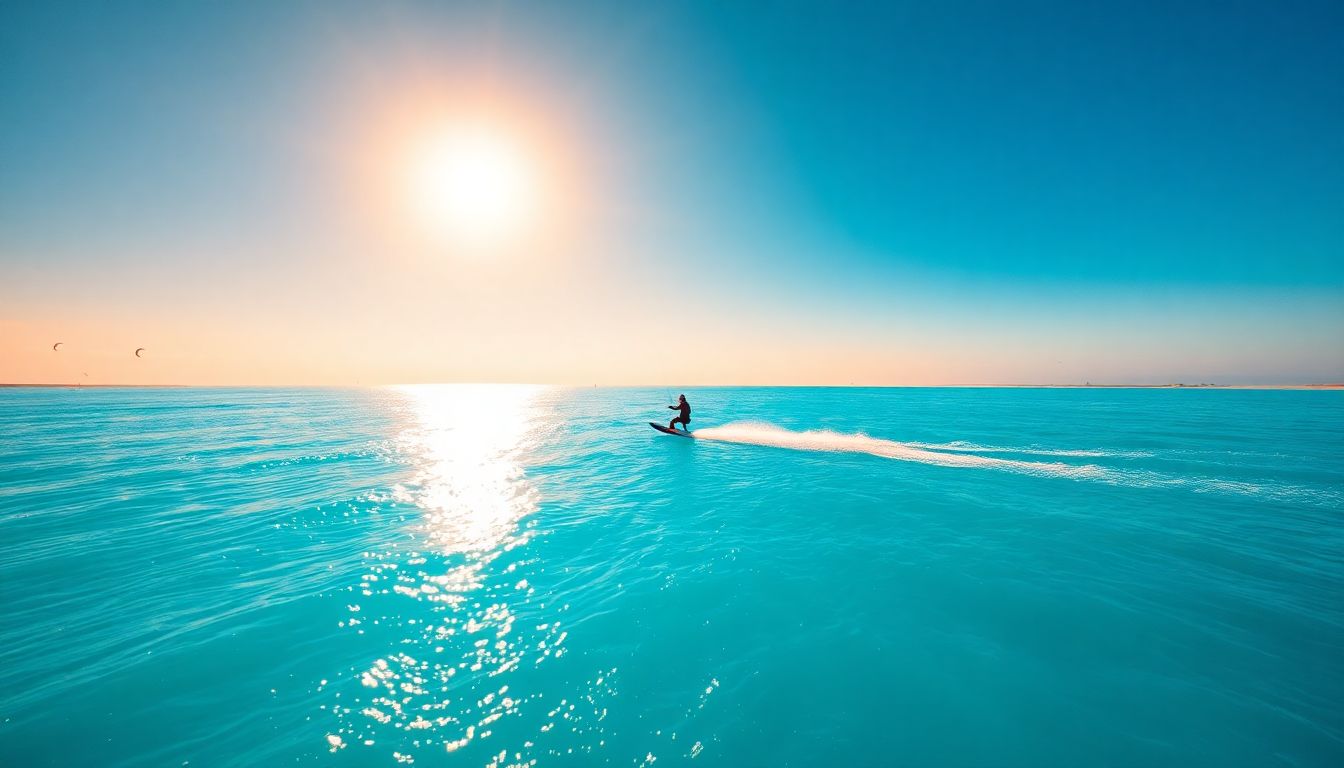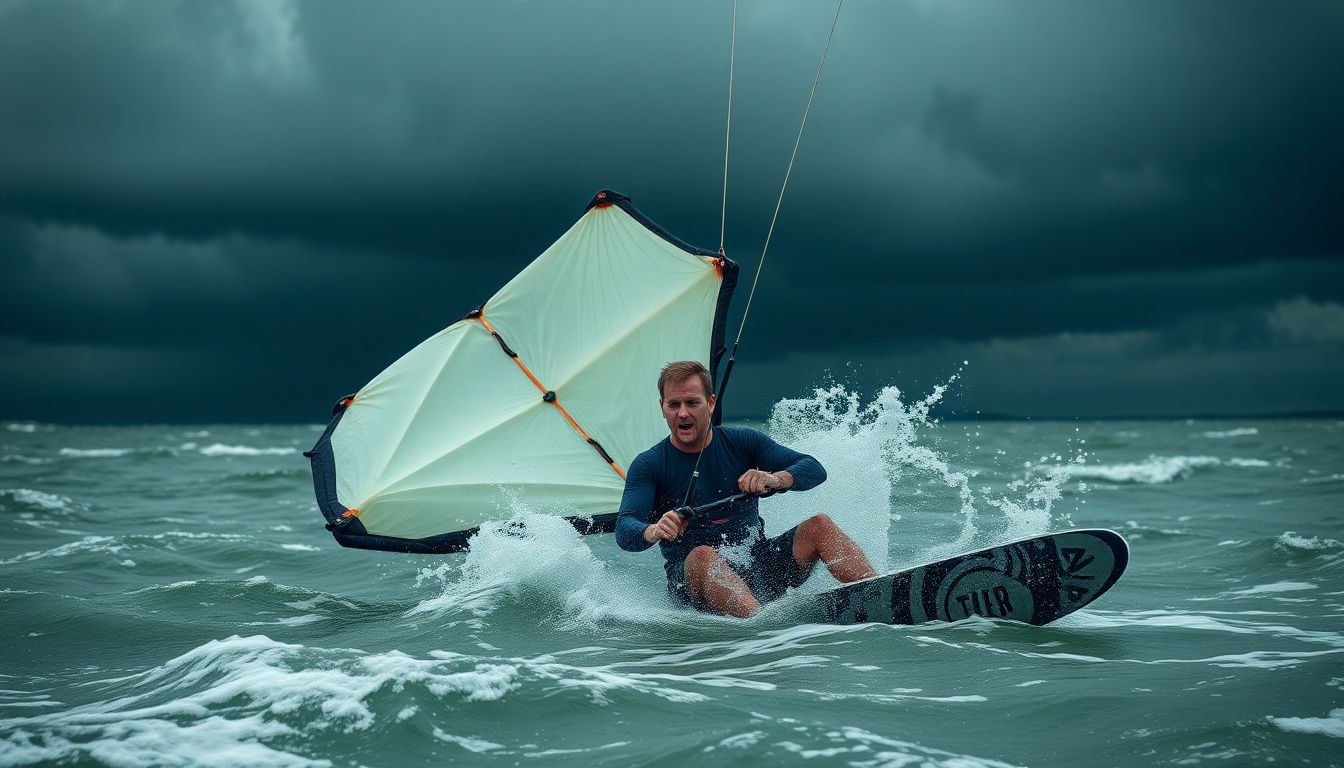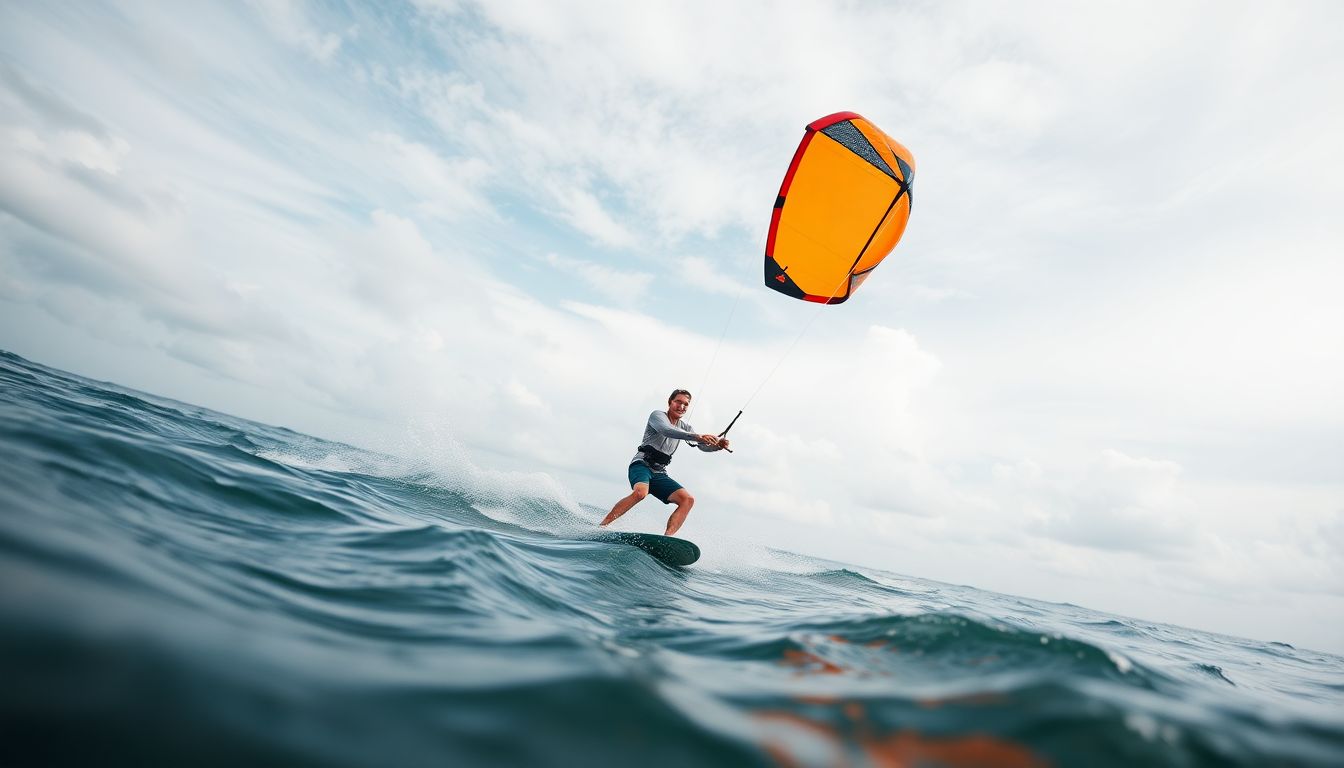A day on the waves, gliding effortlessly while the wind fills your kite can feel like pure magic. I’ll never forget my first perfect kitesurfing session; the wind was steady, and the sun beat down perfectly. In that moment, I realized how vital it is to read the wind accurately. The joy of kitesurfing isn’t just in riding the waves, but in understanding the forces at play around you.
For kitesurfers, knowing how to interpret wind conditions is crucial, whether you’re just starting or an experienced rider. Understanding the wind can lead to safer and more enjoyable sessions. When you can predict what the wind will do, you’re more likely to have an amazing day out on the water.
This article will guide you through various aspects of reading wind conditions. You’ll learn how to measure wind speed and direction, identify visual wind indicators, effectively use weather forecasts, develop advanced wind reading techniques, and adjust gear based on wind conditions. Let’s dive into the details.
[Also see our article: A Beginner’s Guide to Choosing the Right Kitesurfing Gear].
Understanding Wind Speed and Direction
Measuring Wind Speed
To start, it’s essential to measure wind speed accurately. Common methods include using an anemometer or checking wind knots. The Beaufort scale is a handy tool that helps classify wind speeds, ranging from calm (0 knots) to hurricane (64+ knots). For instance, average wind speeds in some popular kitesurfing locations can vary:
- Eastern Cape, South Africa: 15-30 knots
- Tarifa, Spain: 20-35 knots
- Maui, Hawaii: 10-20 knots
Understanding these figures can help you plan your sessions better.
Interpreting Wind Direction
Wind direction is equally important. Knowing where the wind is coming from can affect your launch and landing areas. Pay attention to local variations that may affect conditions. For example, a popular location like Hood River in Oregon often experiences shifting winds due to geographical features. Understanding these local quirks can shape your kitesurfing experience.
Wind Gusts and Lulls
Wind can be unpredictable, showing gusts and lulls throughout your session. Recognizing these patterns can greatly impact your time on the water. Gusts can suddenly increase wind strength, while lulls bring a decrease. Experts recommend being flexible and prepared to adjust your technique when these shifts occur. For example, during a gust, you might need to tighten your control, whereas in a lull, relaxing your grip can help maintain balance.
Visual Wind Indicators
Natural Indicators
Nature provides several clues about wind conditions. Look for indicators such as:
- Trees swaying
- Flags flapping
- Water surface texture
Each of these can offer insights into wind strength and direction. For a clearer view, observe cloud formations, as they can signal weather changes.
Interpreting Water Patterns
The water itself offers vital information. Choppy water and whitecaps indicate stronger winds, while flat water often means lighter conditions. For instance, a study showed that whitecaps typically form when wind speeds reach over 12 knots. By analyzing these water patterns, you can anticipate the conditions you’re going to face.
Recognizing Wind Shifts
Keeping an eye on shifting winds is crucial. Subtle changes can occur rapidly, affecting your ride. If you notice a shift in direction or speed, adapt accordingly. A simple tip is to frequently scan your surroundings while kitesurfing to stay ahead of any changes.
Using Weather Forecasts Effectively
Choosing Reliable Sources
To make informed decisions, picking trusted weather apps and websites is vital. Reputable sources like Windy, Windfinder, and local meteorological services provide accurate forecasts vital for kitesurfing. Studies show that accurate wind forecasts average around 85% reliability, especially for short-term predictions.
Understanding Forecast Terminology
Being able to decode forecast jargon simplifies your preparation. Key terms include:
- Wind speed (measured in knots)
- Wind direction (given in degrees)
Understanding these elements can help you make the right decisions before heading out.
Interpreting Wind Forecasts for Kitesurfing Locations
Wind forecasts give specific details crucial for kitesurfing. Look for consistency in wind speeds and predictability to select the best time to hit the water. Knowing when the winds will be strongest can guide when to plan your sessions.

Advanced Wind Reading Techniques
Spotting Thermal Winds
As the sun heats the land, it influences wind patterns, leading to thermal winds, especially in the afternoon. For optimal kitesurfing, grab this opportunity while conditions are favorable. Locations like the Cape Verde Islands often display strong thermal winds, making them perfect for experienced riders.
Identifying Local Microclimates
Every kitesurfing location has unique microclimates dictated by geographic features. Valleys, cliffs, and bodies of water can create localized wind patterns. Understanding these nuances can enhance your kitesurfing experience as it offers insights into where and when to ride.
Utilizing Advanced Tools
With technology on your side, advanced tools can improve wind reading. Consider using wind meters, specialized weather apps, and online resources to gather real-time data. These tools help optimize your understanding, leading to better performance on the water.
Gear Selection and Adjustment Based on Wind
Kite Size Selection
Choosing the right kite size in relation to wind speed and rider weight is crucial. Here’s a quick reference:
| Rider Weight (lbs) | Wind Speed (Knots) | Suggested Kite Size (m²) |
|---|---|---|
| 100-150 | 10-15 | 8-10 |
| 150-200 | 15-20 | 10-12 |
| 200-250 | 20-25 | 12-14 |
Selecting the correct size affects performance and safety significantly.
Adjusting Kite Settings
Fine-tuning your kite settings to align with specific wind conditions can result in better control. Adjustments to the kite bar or line lengths can greatly impact your ride, ensuring you respond well to different conditions. Always stay aware of these adjustments to enhance your overall performance.
Safety Precautions for Variable Wind
Variable wind calls for careful planning. Ensure you stay aware of risky situations and be prepared for sudden changes. Key strategies include:
- Always have a safety plan
- Ride with others when possible
- Frequently check your surroundings for changing conditions
Conclusion
Understanding wind conditions is central to creating perfect kitesurfing days. The insights shared in this article will enhance your ability to read the wind accurately, ensuring better safety and enjoyment during your sessions.
Practice these wind reading strategies, and you’ll find yourself riding the waves with confidence and skill. Head out there, read the wind, and elevate your kitesurfing experience! For more see here.








